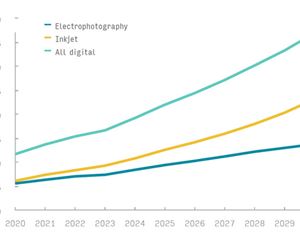From negatives to masterpieces: How Sanjay Kothari is crafting timeless fine art prints
In the heart of Mumbai, where tradition meets modernity, Sanjay Kothari is reinventing the art of photography. As the force behind Photokina Digital, he stands at an intersection of heritage and innovation, poised to embrace the digital future while respecting the craft’s past. A report by Vimal Parmar
23 Apr 2025 | By Vimal Parmar
Sanjay Kothari’s journey is connected to his family legacy. He has an undergraduate degree in commerce and is an alumnus of MM Pupils’ Own School in Khar, Mumbai. Initially, Kothari aspired to study abroad, but eventually, he chose to stay in Mumbai and join the family business.
Kothari’s father, Kakubhai (RL Kothari), established Photokina in 1976, providing essential photographic materials to professionals at a time when film was the standard. “Growing up in that environment, I developed a passion for photography and an understanding of its transformative power,” Kothari says, acknowledging the foundational influence of his father’s work. However, as the industry began to shift from film to digital in the early 2000s, it became clear that adaptation was not just preferable but necessary.
While Kothari’s brother Rajesh Kothari handled the retail side of the family business, Kothari focussed on preserving the visual narratives left by Kakubhai. Witnessing the need to digitise a wealth of negatives and transparencies, he plunged into digital technology, experimenting with a Nikon Coolscan 8000 in 2002. “The ability to breathe new life into old photographs has been rewarding,” he explains. This exploration laid the groundwork for the evolution of Photokina Digital.
In 2004, Kothari invested in an Epson Stylus Pro 9600 printer to pursue excellence, setting the stage for a venture that prioritised the high standard of fine art printing. “We wanted to ensure that every print we produced met museum-grade quality,” he asserts, a clear indication of his commitment to the craft. Today, Photokina Digital is a leader in scanning and digitisation and is proud to be a Hahnemuehle Certified Studio for digital fine art printing.
A niche enterprise
Today, Photokina Digital has established a distinct presence in India’s fine art printing sector, gaining recognition among artists, photography enthusiasts, and fine art photographers nationwide. The enterprise, which employs a dedicated team of four, focusses on high-quality prints using archival papers from brands such as Hahnemuehle, Canson, Moab, and Ilford.
Kothari credits the company’s success to the quality of their work and the consistency its team delivers. “Our clients have trusted us for 15–20 years, and their continued loyalty is the best feedback we could ever receive,” he remarks.
What sets Photokina Digital apart is its reliance on word-of-mouth for growth, eschewing traditional marketing methods. The printing process is notably hands-on; each image is carefully reviewed, and any necessary corrections are discussed directly with the artist before the final prints are meticulously produced. “We believe in setting our own benchmarks rather than keeping an eye on competitors. This philosophy has fortified our unique position in a niche market,” he says.
Challenges and industry insights
Despite the gradual expansion of the business over the years, the market remains in infancy, marked by limited awareness among potential customers. Kothari points out that while many are willing to spend lavishly on decor, they often hesitate to invest in fine art prints, which can enhance their living spaces for years. “There is a crucial need for increasing education and awareness in the industry,” Kothari says, stressing that printed images possess emotional and archival value that digital formats often lack.
Sustainability also emerges as a significant hurdle in Kothari’s journey. He notes that despite his advocacy for environmentally responsible practices, major printer manufacturers have largely overlooked the issue of recycling empty cartridges.
Nevertheless, Kothari has committed to leading by example within his business. He prioritises educating his team about sustainable practices and fosters a culture of mindfulness regarding the materials used in the printing process. “Encouraging careful disposal of waste is essential,” he asserts, actively seeking alternative methods to minimise environmental impact.
Personal passions and philosophy
Beyond his professional life, Kothari is a man of diverse interests. He enjoys travelling to high-altitude destinations, a passion that aligns with his introspective nature. A fan of music from the 1980s and 1990s—both in English and Hindi—he also loves exploring vegetarian cuisines and attending cultural events in Mumbai.
Following in his father’s footsteps, Kothari collects sculptures, reflecting his family’s enduring artistic sensibilities. When it comes to unwinding, he prefers catching up on the news or meeting with friends. Each day presents new challenges for him, and his drive to overcome them keeps him motivated.
Kothari’s family is a pillar of support in his life. His wife is a Spanish tutor, his elder son works in the United States of America, and his younger son is an engineering student. He credits their support as instrumental to his journey.
box iem.png)
Looking ahead
Kothari believes that fine art printing industry holds great potential despite its limitations. With advancements in printing technology plateauing, the focus must shift to raising awareness about the value of physical prints. “Prints have a warmth and emotional depth that digital files cannot replicate,” he asserts.
Kothari’s story is one of vision and resilience, a testament to the enduring beauty of printed art in an increasingly digital world. Through Photokina Digital, he continues to blend his love for photography with a commitment to preserving its legacy, ensuring that every print tells a story worth cherishing.
(Vimal Parmar is an independent marketing consultant and digital print evangelist)















 See All
See All